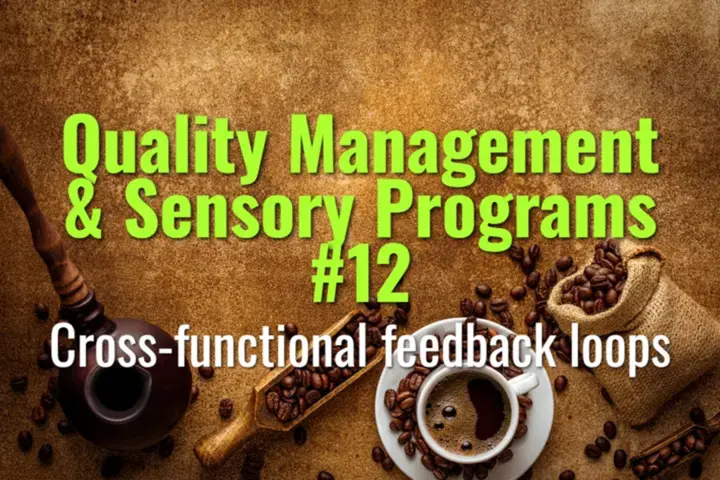Cross-functional feedback loops
How to design cross-functional feedback loops that connect producers, roasters, baristas, and customers in a continuous cycle of quality improvement.
- Coffee Basics Nerds
- 2 min read
Article 12 of 12 in Quality Management & Sensory Programs/

Why Cross-Functional Feedback Matters
- Coffee quality is influenced at every stage: farming, processing, roasting, brewing, and service.
- Without feedback loops, issues are isolated and repeated.
- Cross-functional systems create a closed loop of learning and improvement.
Key Feedback Channels
- Farm to Roaster:
- Roasters provide cupping feedback on lots (defects, flavor clarity).
- Farmers adjust processing/drying methods for future harvests.
- Roaster to Barista:
- Roasters share roast curves, intended flavor notes, and brew guidelines.
- Baristas provide service-level feedback on shot behavior and customer reception.
- Barista to Customer:
- Educate customers about origin, process, and flavor.
- Collect feedback on taste, presentation, and satisfaction.
- Customer to Roaster/Farm:
- Surveys, complaints, and praise relayed back to influence QC and sourcing.
Practical Tools
- Shared QC Logs: Centralized digital platforms for green, roast, and brew data.
- Cupping Sessions: Joint cuppings with roasters, baristas, and sometimes customers.
- Staff Briefings: Pre-shift tastings to align flavor descriptions.
- Supplier Scorecards: Documented performance reviews tied to sensory data.
Benefits
- Faster Problem-Solving: Roast drift or green defects identified quickly.
- Alignment: Everyone shares the same flavor targets and quality standards.
- Learning Culture: Encourages collaboration rather than blame.
- Customer Loyalty: Feedback is visibly acted upon, building trust.
Example Workflow
- Barista notes higher sourness in espresso → logs in QC system.
- Roaster reviews and identifies slight underdevelopment → adjusts profile.
- New roast cupped jointly with baristas → alignment achieved.
- Customer feedback improves → cycle repeats.
Summary
Cross-functional feedback loops ensure communication flows across the entire coffee chain. By connecting farmers, roasters, baristas, and customers, businesses create a living system of continuous improvement that enhances quality, consistency, and customer trust.
You might also like:
- Tags:
- Coffee Quality
- Matters Coffee
- Flavor Clarity
- Continuous Improvement
- Qc Logs
- Flavor Notes
- Customer Trust
- Customer Feedback
- Cupping Feedback
- Roasters Baristas
- Example Workflow
- Quality Consistency
- Roasting Brewing
- Farmers Roasters
- Coffee Chain
- Quality Standards
- Roast Curves
- Roast Brew
- Origin Process
- Farm Roaster